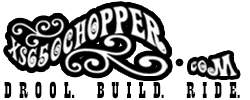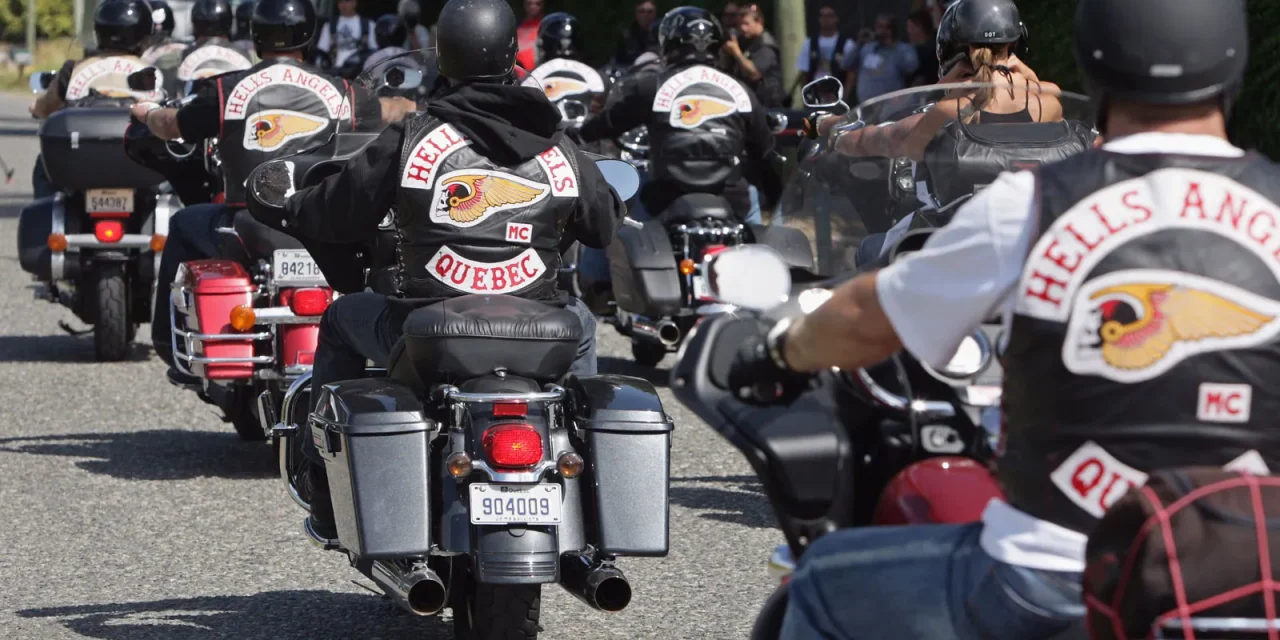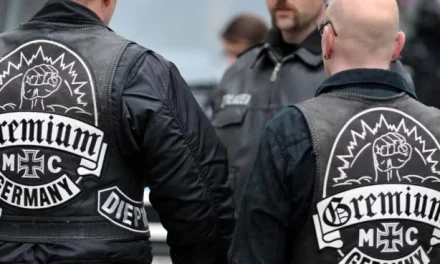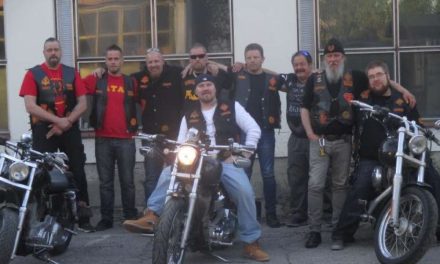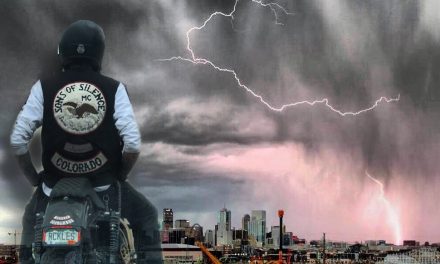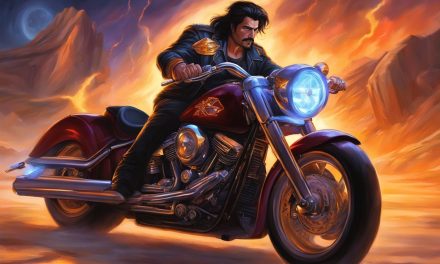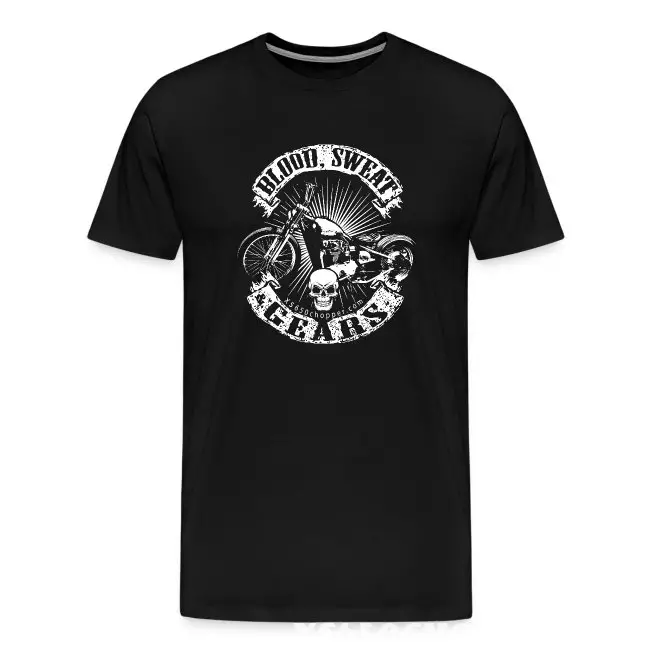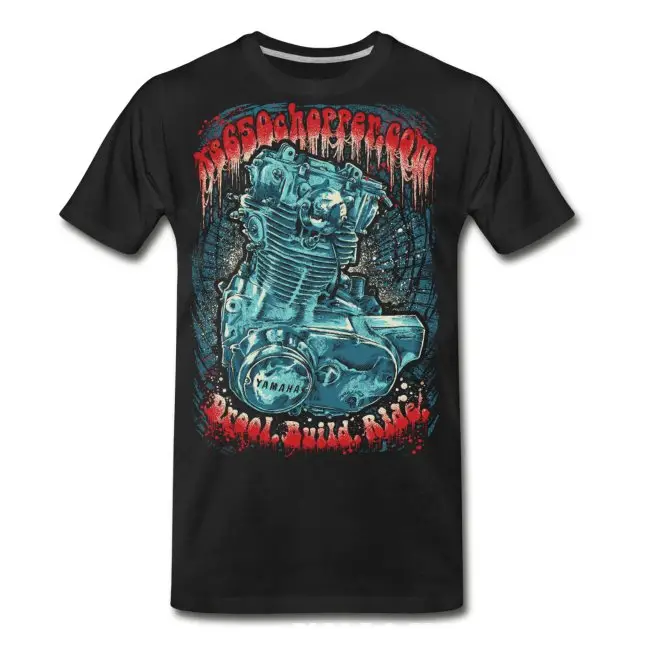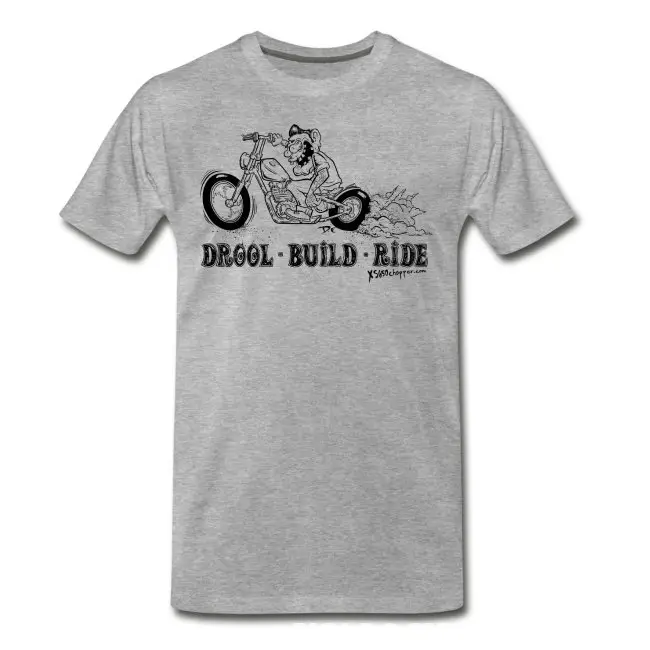When you think of motorcycle clubs, the Hells Angels often come to mind as one of the most well-known names in the world. Originating in California in 1948, the club has since become synonymous with the term “outlaw motorcycle gang,” although this label covers a range of both legal and illegal activities.
The Hells Angels are more than just a collective of motorcycle enthusiasts; they represent a complex subculture with its own set of rules and hierarchy, often seen as a subject of intrigue and controversy.
The Hells Angels Motorcycle Club has left an indelible mark on both American culture and the international scene. With their distinctive patches and strong sense of brotherhood, they’ve been a subject of law enforcement scrutiny and a pervasive part of popular culture, inspiring films, books, and documentaries.
Their clubhouses, scattered across the United States and beyond, are not just meeting places but symbols of their presence and security. As you ride through the information highway about the Hells Angels, you will uncover a layered narrative that is part of a larger conversation about freedom, rebellion, and the boundaries of society.
Origins Misattributed to Sonny Barger
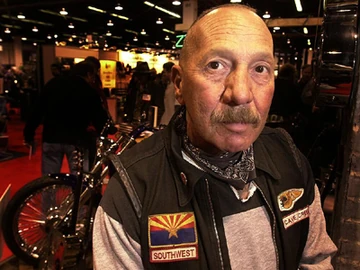
Despite common misconceptions, Sonny Barger was not the founder of the Hells Angels Motorcycle Club. The club’s origins trace back to March 17, 1948, in Fontana, California. It was first formed by Otto Friedli after breaking away from another motorcycle club, creating a legacy that would expand globally.
When you think of the Hells Angels, Barger is often the first name that comes to mind. He did indeed play a pivotal role in the club’s history, but his influence began when he founded the Oakland chapter in 1957.
His leadership would eventually lead to a significant organizational structure and the national expansion of the club. Moreover, another important figure is Arvid Olsen, who helped establish the San Bernardino chapter and is often credited with suggesting the club’s name, linking it back to his service in the Hell’s Angels bomber squadron during World War II.
It’s fascinating how the formation and growth of such a notorious group has its threads tangled in misconception, with Barger’s charismatic involvement overshadowing the actual founders.
Global Expansion with Hundreds of Chapters

Since its founding, the Hells Angels Motorcycle Corporation has seen substantial global expansion. Beginning as a small group in Fontana, California after World War II, its roots are often linked to former members of the military, including those associated with the 303rd Bombardment Group and the Flying Tigers.
Today, you can find Hells Angels chapters across the United States, from the bustling streets of New York City to the sunny coasts of California. International growth has taken them far from their origins, with chapters now in Auckland, New Zealand, various cities in France, and beyond. Wherever they’ve established themselves, they’ve maintained a distinct cultural presence and membership status that transcends borders and unites members under a common banner.
Their numbers are robust, with estimates indicating that there are between 2,000 and 2,500 members worldwide. Chapters: Every chapter embodies the spirit of the founding members while adapting to the local color and customs, making each one unique yet part of a larger, cohesive whole.
Harley-Davidson as the Motorcycle of Choice

When you see a Hells Angels member on the road, the rumble you hear is likely coming from a Harley-Davidson motorcycle. This iconic brand has become synonymous with the club for several reasons.
Harley-Davidson bikes embody the spirit of freedom and rebellion that the Hells Angels are associated with. Riding on the open road with the wind whipping past, leather jackets reflecting a long-standing biker tradition, the choice of a Harley-Davidson is as much about culture as it is about the bike itself.
Here’s what makes these motorcycles stand out:
- Cultural Icon: They represent the quintessential biker image.
- Ergonomics: Designed for comfort on long rides which appeals to those who spend significant time traversing the open road.
- Customization: Harleys can be easily customized, offering a personal touch to reflect each rider’s individuality.
A Philanthropic Side to the Notorious Club

The Hells Angels Motorcycle Club is often recognized for their tough exterior and controversial events, but there’s another facet that usually gets less attention: their charity work.
You might be surprised to know that these leather-clad riders frequently rally for a good cause. Their contributions include fundraisers for families of fallen riders, blood drives, and toy runs to bring a little cheer to children during the holidays.
These philanthropic gestures suggest that the club’s members are capable of showing a compassionate side to communities.
Sometimes, their charity events are tied to local establishments, where fundraising might involve selling beer with proceeds going to select charities.
In instances of natural disasters or emergencies, members have been known to come forward to deliver supplies and aid to affected areas. A remarkable aspect of their philanthropy is that despite experiencing frequent raids and legal pressures, the club still finds ways to contribute positively.
Though their actions might not erase the public’s skepticism nor overshadow their notorious reputation, understanding of the Hells Angels might be broadened knowing they can ride into a community not just with a roar but also with a heart inclined toward victory for a charitable cause.
Inspired by a Military Squadron

The connection between the Hell’s Angels and military history is well-founded. Initially, the name was associated with the 3rd Pursuit Squadron of the Flying Tigers, a group of American volunteer aviators aiding the Chinese against Japan before the U.S. officially entered World War II.
They played a crucial role right after the attack on Pearl Harbor, shooting down almost 300 Japanese aircraft from December 20, 1941, to July 4, 1942.
Shifting to the European theater, the 303rd Bombardment Group of the U.S. Army Air Forces honored this name during World War II. Notably, their B-17 Flying Fortress, tail number 41-24577, proudly bore the moniker Hell's Angels.
This particular bomber became legendary as the first B-17 to complete 25 combat missions with the Eighth Air Force, symbolizing the Allies’ tenacity and drive towards victory. The wartime spirit of the “Hell’s Angels” showed resilience and courage, traits later embraced by the motorcycle club that adopted the name and made it iconic.
Rigorous Membership Process

Entering the ranks of the Hells Angels is no small feat and requires a significant commitment. As someone interested in joining, you would start as a “hang-around,” associating with club members and participating in events without any official status. This period allows you to get acquainted with the club’s culture and for members to evaluate your fit within the brotherhood.
If you prove your dedication, you may then be invited to become an “associate,” a stage where your commitment is further tested. Progressing from an associate, you can then earn the title of “prospect.” As a prospect, you’re expected to show utmost loyalty and adhere closely to the club’s rules and codes.
This is a rigorous phase and involves various challenges that you must overcome to demonstrate your worthiness for full membership, or becoming a “full-patch” member.
Earning your full-patch is a pivotal moment, signifying that you’ve become a part of the elite brotherhood, summarized by the motto “Angels Forever; Forever Angels.” Remember, should you receive the iconic patches, it’s seen as a lifelong commitment to the Hells Angels Motorcycle Club.
The Sacred ‘Death’s Head’ Logo
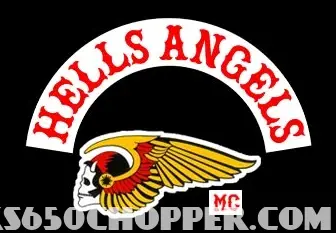
You’ve likely seen the captivating ‘Death’s Head’ logo associated with the Hells Angels; it’s an emblem that encapsulates their identity and their stance against mainstream norms. This winged skull symbol signifies more than just a logo – it’s a statement of the club’s defiance and commitment to the motorcycle outlaw lifestyle.
- Significance: A symbol of camaraderie and rebellion, the ‘Death’s Head’ is so sacred to the Hells Angels that they protect it rigorously under intellectual property laws.
- Legal Actions: The club has taken to court organizations and individuals, including fashion brands like Alexander McQueen, for trademark infringement. Their proactive defense ensures their logo remains exclusive to their members, safeguarding it from unauthorized use.
Remember that while the ‘Death’s Head’ logo started as a simple club insignia, it has evolved over the years into an iconic representation of the Hells Angels Motorcycle Club. This logo is a badge of honor, worn proudly and defended fiercely.
